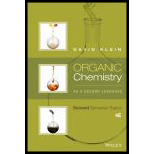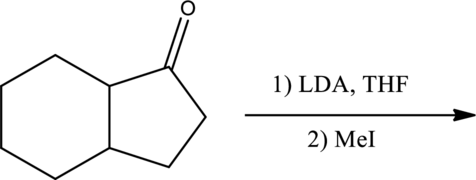
Interpretation:
Major product has to be predicted for the given reaction.

Concept Introduction:
Alkylation of enolate can be done using

Want to see the full answer?
Check out a sample textbook solution
Chapter 8 Solutions
Organic Chemistry As a Second Language: Second Semester Topics
- Predict the principal organic products for each of the following reactions:arrow_forwardPredict the products for each of the following reactions and propose a mechanism that explains the formation of each product.arrow_forwardProvide the correct conditions and their major products for the two reactions below:arrow_forward
